BACK
TO WEATHER-BLOG MENU
New!
Fine Art Prints & digital images for sale-
Welsh Weather
& Dyfi Valley landscapes Slide-Library - Click HERE
| Finally,
some very welcome work came along in mid-October! The first job was a 3-day field trip to North Wales with third-year geology students from Cardiff University. A large group indeed - 42 students, three postgrad demonstrators, the leader, Prof. Pearce, myself and my colleague Tom from the National Museum. Our group visited ten different ore-deposits over a three-day period, so a lot was crammed in, but I'll concentrate on the photogenic highlights. Day one saw us meet in Coed y Brenin to the north of Dolgellau, home to the largest copper deposit in the UK, discovered by Riofinex in the late 1960s. The idea was to study the various types of mineralisation and alteration associated with the copper deposit. The students were split into groups whilst we drove around meeting them at key exposures, one of which is at one of the highest points in the forest. On a clear day this is an excellent viewpoint but on this occasion the light was fantastic and I excused myself for a few minutes' photography. The first shot shows the road along this high hill, Moel Hafod Owen, with Cadair Idris forming a magnificent backdrop:  From a little further along, looking down the valley of Afon Wen, on down the Mawddach valley below the confluence of the two rivers to Cadair Idris' summit with Cyfrwy on the RHS. The light was ethereal: 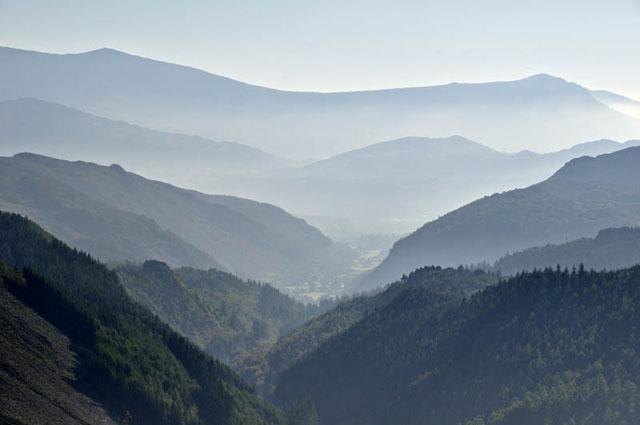 And a shot directly towards Cyfrwy, with Foel Ispri and Cefndeuddwr in the foreground: 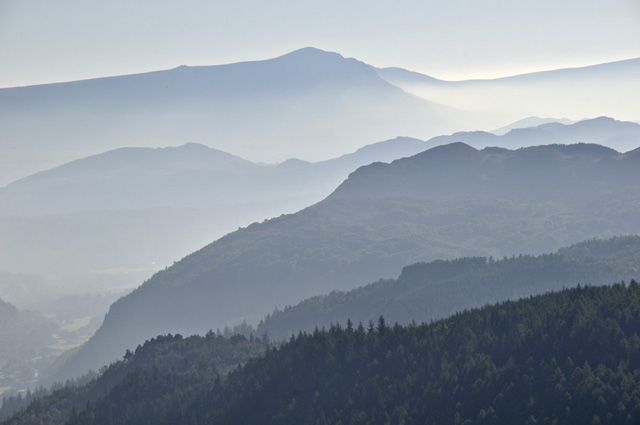 The reason for dragging the students up to this hillside is the rock-exposure illustrated below: 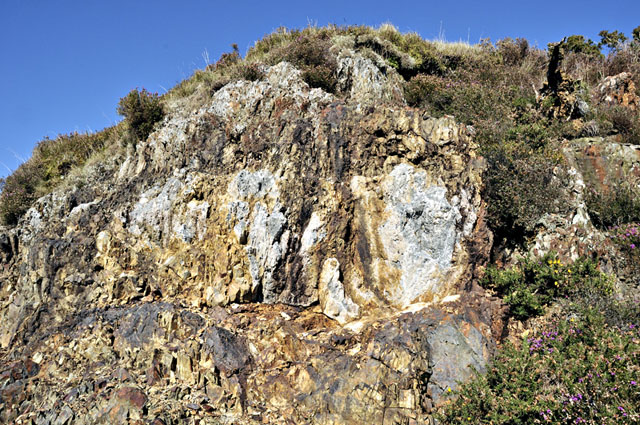 And in close-up: 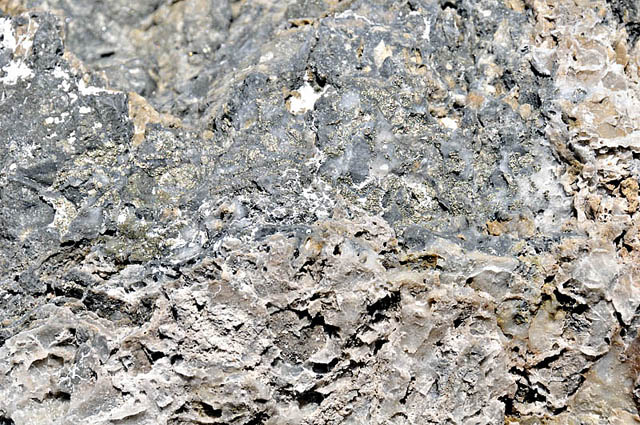 This is a pipelike structure, within which the local sedimentary rocks - mudstones belonging to the Upper Cambrian Ffestiniog Flags Formation - have been shattered, cemented and partially replaced by a mix of silica and pyrite. Other sulphides are also present but are too finely-grained to see except with a microscope. The pipe is believed to be the roots of an ancient fumarole (geyser) system, formed when groundwaters explosively reacted with magma deep underground, during the volcanic activity that took place hereabouts at the end of the Cambrian and beginning of the Ordovician periods. That makes it getting on for 500 million years old. The site is a SSSI for its fascinating geology, which has been covered by a PhD thesis but not in mineralogical detail by any work published in the peer-reviewed literature - it deserves that coverage! The following day dawned cloudy but brighter conditions were forecast for the afternoon. We piled onto the huge coach and had an interesting journey up into Snowdonia, the excellent driver doing an impressive job of negotiating some awkwardly narrow bridges. After spending the morning at the Sygun copper mine near Beddgelert, we headed north to Anglesey and the famous copper-mines of Parys Mountain. Mining at Parys dates back to the Bronze Age but the heyday of mining was in the late 1700s, when the site was as important as any in Europe. Geologically, it is classified as a Volcanogenic Massive Sulphide (VMS) deposit - meaning that the ore-minerals were deposited by "black-smokers" on an ancient sea-bed during a period of volcanic activity. The mineralisation consists of quartz with abundant sulphide minerals: two types of ore were worked - "yellow ore" being a mixture of pyrite and chalcopyrite (the source of copper) and "blue ore" being a mixture dominated by sphalerite (zinc ore) and galena (lead ore). Also present are arsenic, antimony, bismuth, silver and gold. A considerable amount of unworked mineralisation has been found to the west of the existing workings by the company Anglesey Mining, who have drilled boreholes and driven new underground workings to explore this new ground. For the geologist, there is plenty of interest here, but for the photographer it presents a rather unique experience in the right light - bright sunshine is best as it allows the vivid colours to stand out. Although a bit hazy on this occasion, the colours were not bad at all: 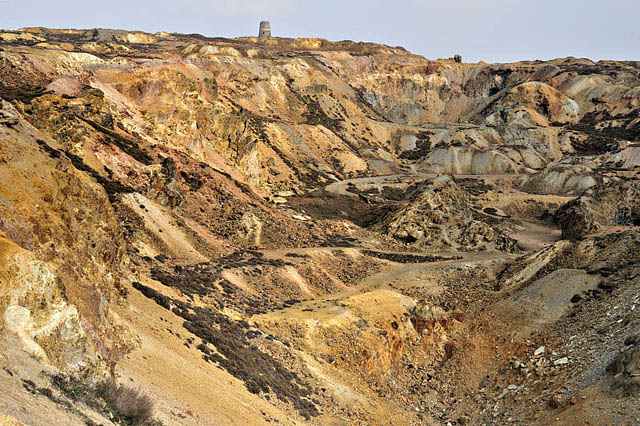 These are all images of the Great Opencast, dating back over 200 years. The amazing colours are due to various oxides of iron, formed by the weathering of the abundant pyrite. Some of the weathering post-dates the mining but some pre-dates it: the deposit was originally covered by a thick "gossan" - a hard mixture of rock-fragments, quartz and the iron oxide goethite. In the gossan, likely formed over the past few tens of millions of years, there also occurred the mineral Anglesite - named after Anglesey, a sulphate of lead and one of the few other minerals able to withstand the harshly acidic environment. 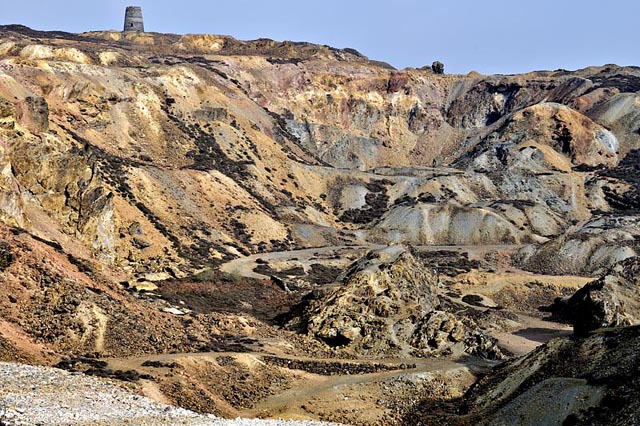 Close to this point (above), a viewing-platform has been erected, but there are many spectacular points for the photographer. The three shots below are from the RHS of the opencast: 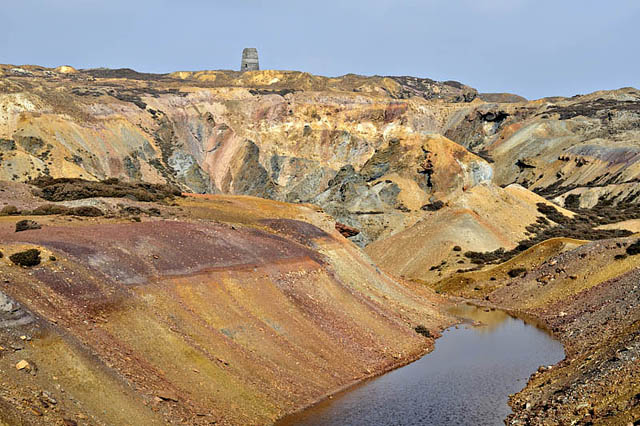  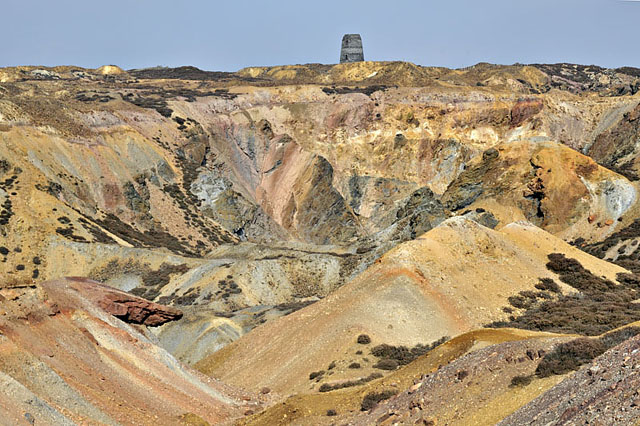 No wonder that the site has been used for location filming for things that need an "extraterrestrial" look to them, such as Dr Who! That night the weather went downhill but the following day saw the Coed y Brenin teaching wrapped up and with a final visit to a zinc mine near Aberystwyth the job was completed. The following week saw a day trip to Taffs Well just north of Cardiff to help the Countryside Council for Wales assess a couple of working quarries for their mineralogical importance as potential SSSIs. With working quarries, one cannot just go in and shut them down because their work has uncovered something interesting - that would be ridiculous! But, when a quarry closes for the last time, it can be reassessed to see if anything of interest is on show and - if it is and safe access can be provided, then features may potentially be preserved. While a quarry is working, everything can be expected to get crushed into aggregate. The best policy during that phase is to collect specimens of anything of interest and preserve them for posterity - which is exactly what the National Museum in nearby Cardiff does. The Museum has pretty much everything from these quarries now, so when I found a good cavity in a boulder I was able to collect for myself:  The image above is post-collection - the crystals deeper in the pocket would be difficult to extract owing to the very hard nature of the dolomitised limestone matrix. The specimen is illustrated below: the main crystal is 55 mm long and undamaged. I don't do a lot of mineral collecting these days but couldn't resist this one! 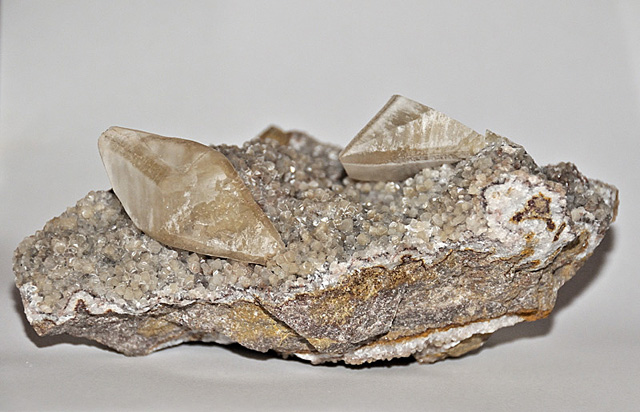 Other, larger cavities are often filled with dark brown clay: these are also lined with crystals, as in the image below, but on cleaning they are found to be badly etched by groundwaters and nothing more than "garden rocks".  Some even bigger, multi-metre sized cavities were visible in the quarry walls, filled with huge crystals to over 20cm in length. Although impressive in size terms, they are generally, in the words of the mineralogist F.J. North, writing in 1916, to be "of such a nature as to be looked at rather than collected". He was right then and is right now! 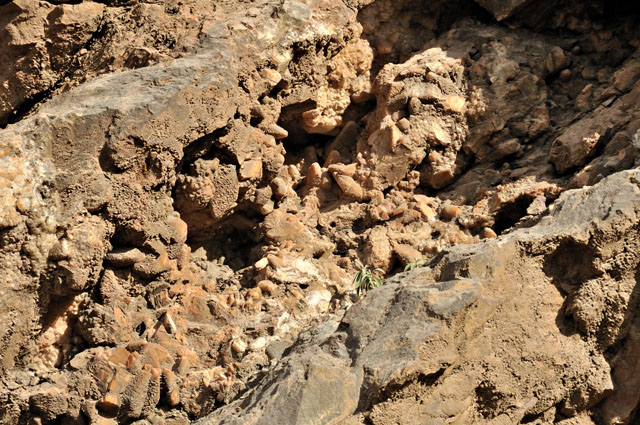 The bigger of the two quarries is Taff's Well itself, which has been worked for decades. It has undergone some major modifications in recent years. Formerly, the vehicle access and the crushing/classifying plant was all located at the top of the quarry's western side. In recent years that has changed: an access tunnel has been constructed, bringing vehicles out to a roundabout a fraction of a mile from the main A470 (below): 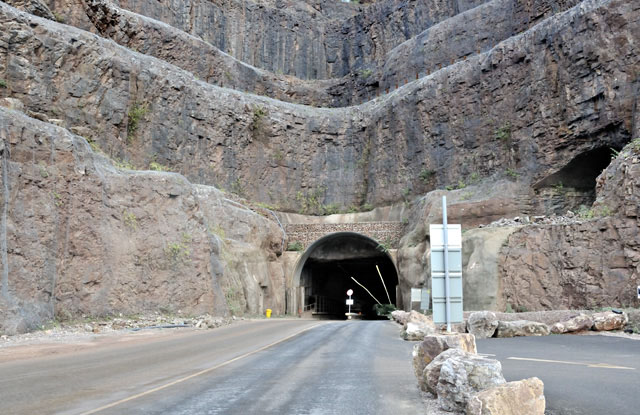 Here's an overview of Taff's Well Quarry - the main working area is out of sight to the R: 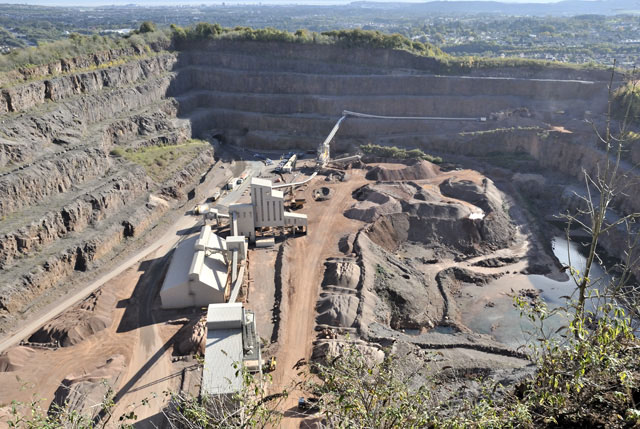 With Cardiff, the Bristol Channel and the Mendips as a backdrop: 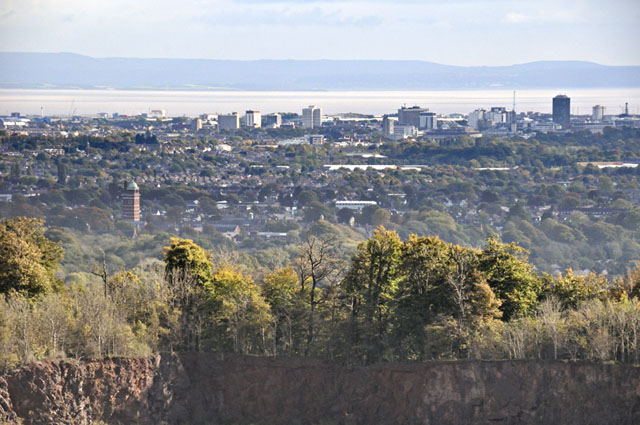 Previously, the rock had to be hauled up out of the quarry to the plant. Now, it is hauled down to the primary and secondary crushers, linked by conveyor:  And thence to the brand new classifying/loading plant:  And off into the wider world via the tunnel: 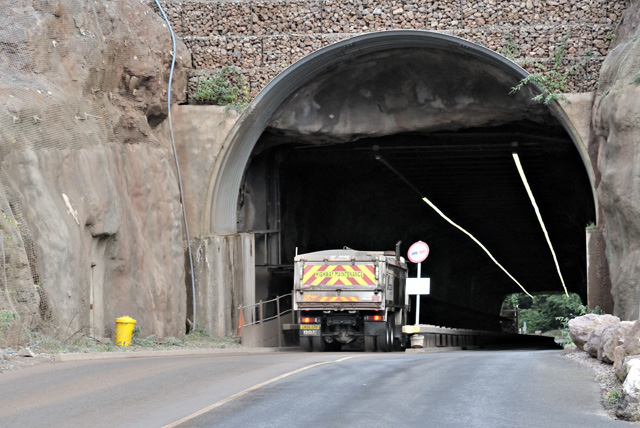 Chatting to the quarry management, I was impressed by the energy savings this has achieved. The previous crushing plant was old and worn out, so it needed replacing: having the quarry's fleet of huge dumpers driving uphill empty and taking their loads downhill has brought a fuel saving of 75%! That's a fantastic achievement, and the tunnel means that the lorries taking aggregate from the site no longer have to negotiate the rather narrow lane from Tongwynlais to Pentyrch - an area also busy with residential traffic. This is a pragmatic approach that has solved several problems all in one fell swoop. On the weather-front, things have been pretty quiet: the first Autumn frosts occurred during the North Wales field trip mid-October, and there have been a few since, but as of a couple of days ago, a mild moist sou-westerly regime took over and looks to continue as we move into November. But it remains a remarkably storm-free year to date - at least here in the UK - other parts of the world have had more than their fair share! |
|
BACK TO WEATHER-BLOG MENU New! Fine Art Prints & digital images for sale- Welsh Weather & Dyfi Valley landscapes Slide-Library - Click HERE |